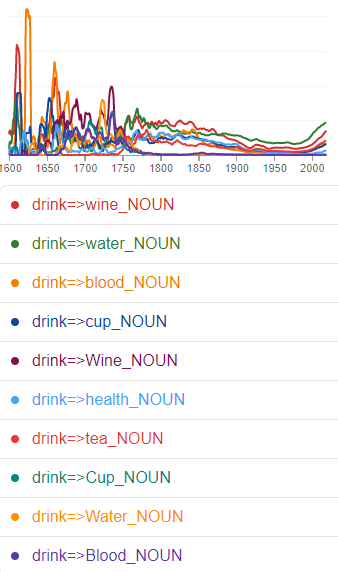When you enter phrases into the Google Books Analytical Graphics Viewer, it displays a graph showing how those phrases have occurred in a corpus of books (e.g., "British English", "English Fiction", "French") over the selected years. Let's look at a sample graph:
This shows trends in three ngrams from 1960 to 2015: "nursery school" (a 2-gram or bigram), "kindergarten" (a 1-gram or unigram), and "child care" (another bigram). What the y-axis shows is this: of all the bigrams contained in Google Books' sample of books written in English and published in the United States, what percentage of them are "nursery school" or "child care"? Of all the unigrams, what percentage of them are "kindergarten"? Here, you can see that use of the phrase "child care" started to rise in the late 1960s, overtaking "nursery school" around 1970 and then "kindergarten" around 1973. It peaked shortly after 1990 and has been falling steadily since.
(Interestingly, the results are noticeably different when the corpus is switched to British English.)
You can hover over the line plot for an ngram, which highlights it. With a left-click on a line plot, you can focus on a particular ngram, greying out the other ngrams in the chart, if any. On subsequent left clicks on other line plots in the chart, multiple ngrams can be focused on. You can double click on any area of the chart to reinstate all the ngrams in the query.
You can also specify wildcards in queries, search for inflections, perform case insensitive search, look for particular parts of speech, or add, subtract, and divide ngrams. More on those under Advanced Usage.
_INF – Grammatical Modifications (inflections)
Example: book_INF a hotel
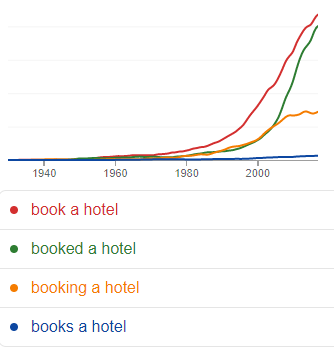
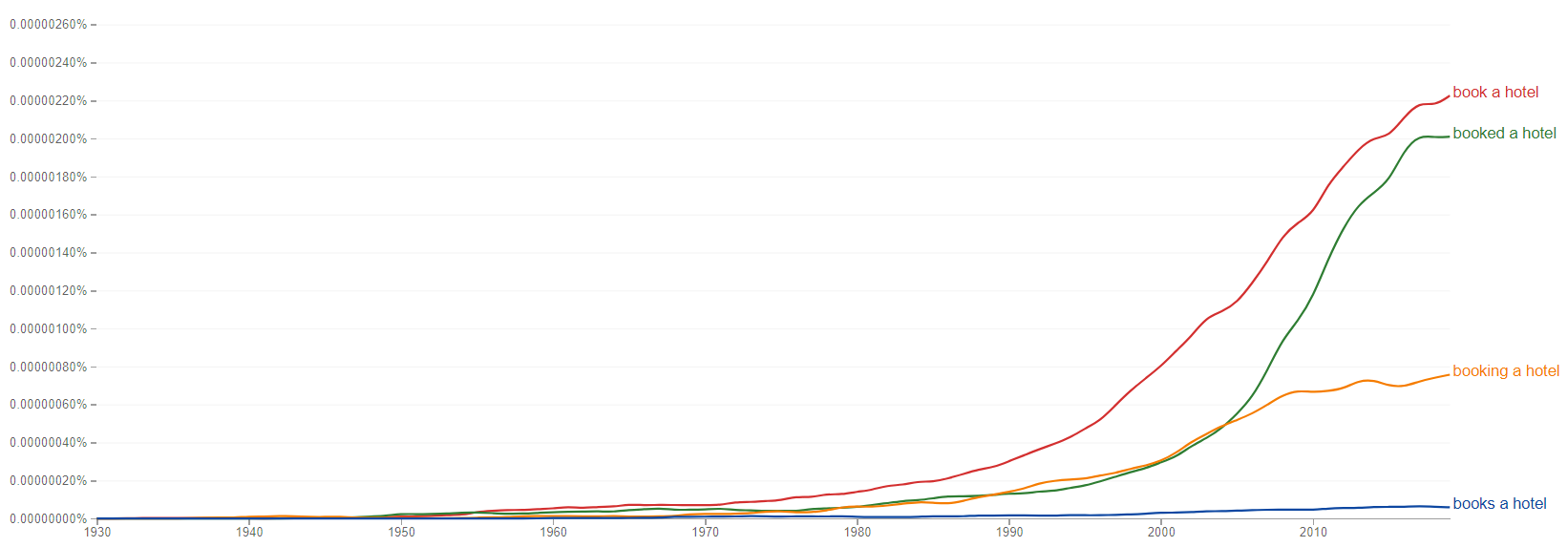
Example: read_INF
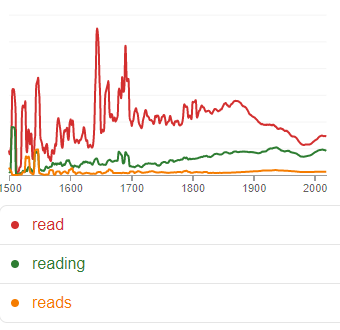
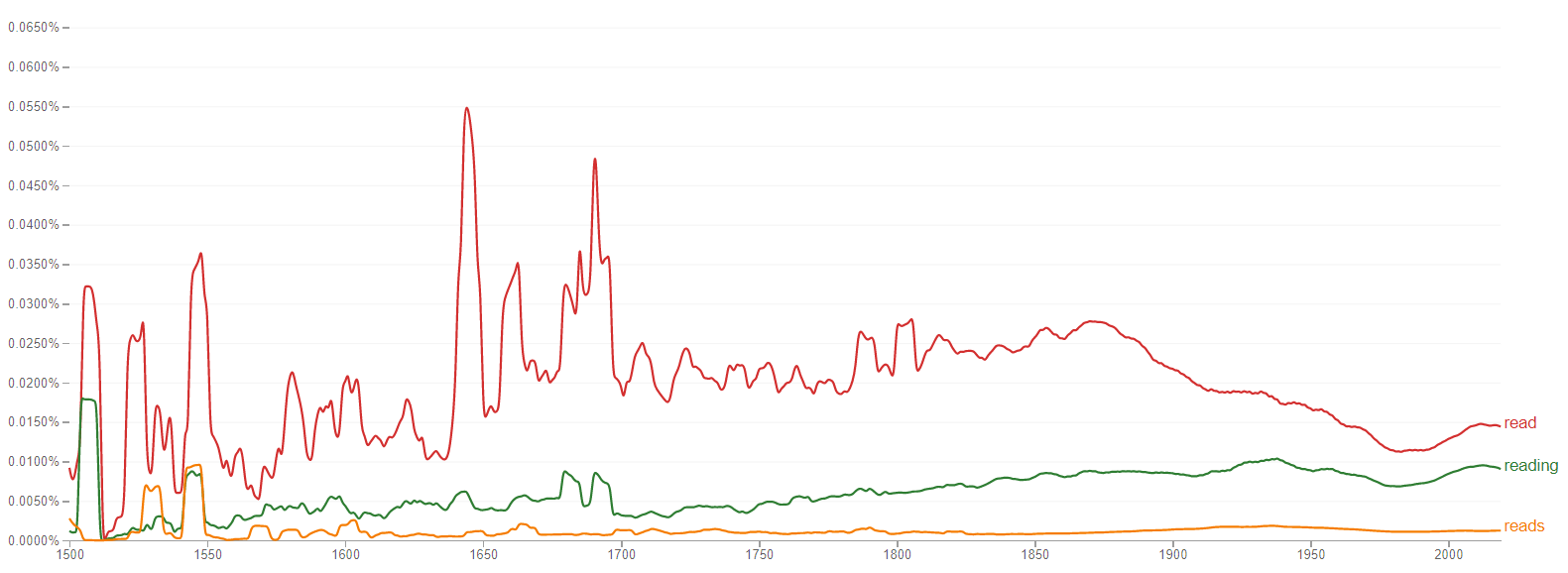
Example: run_INF
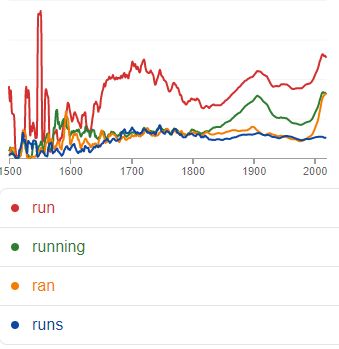
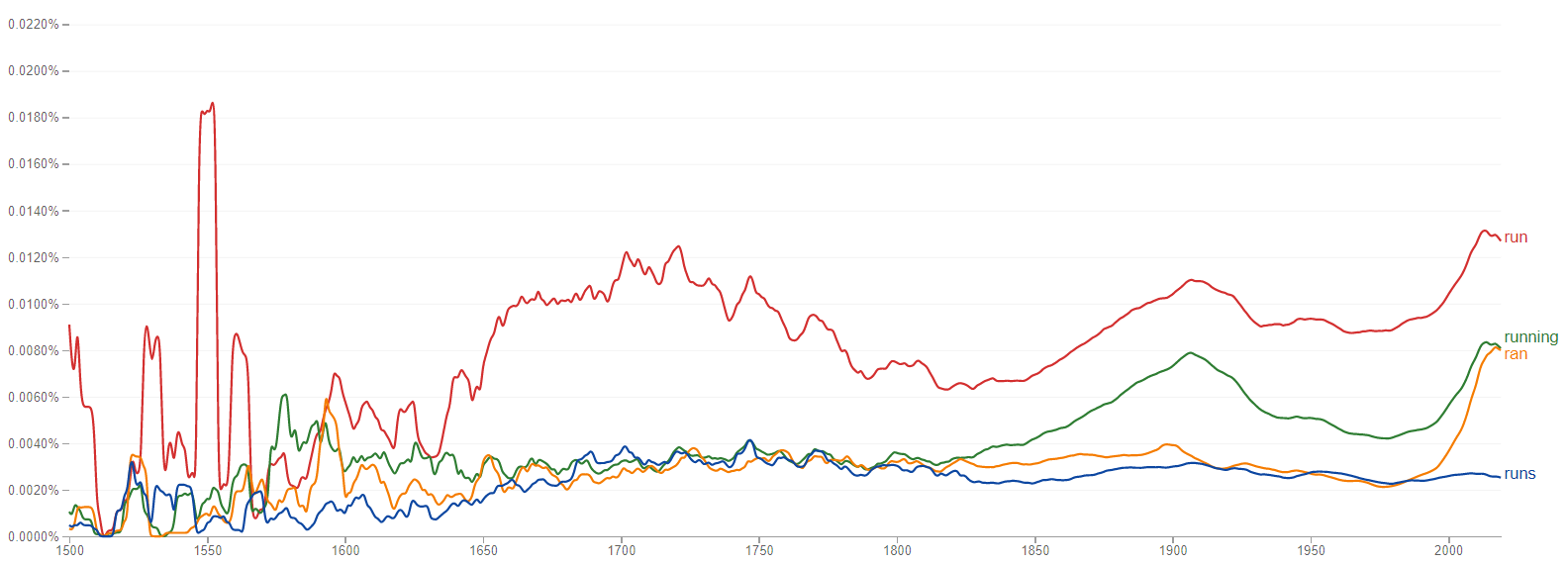
Example: dance_INF
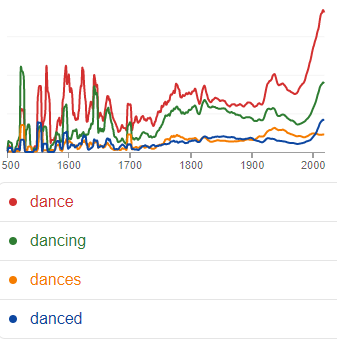
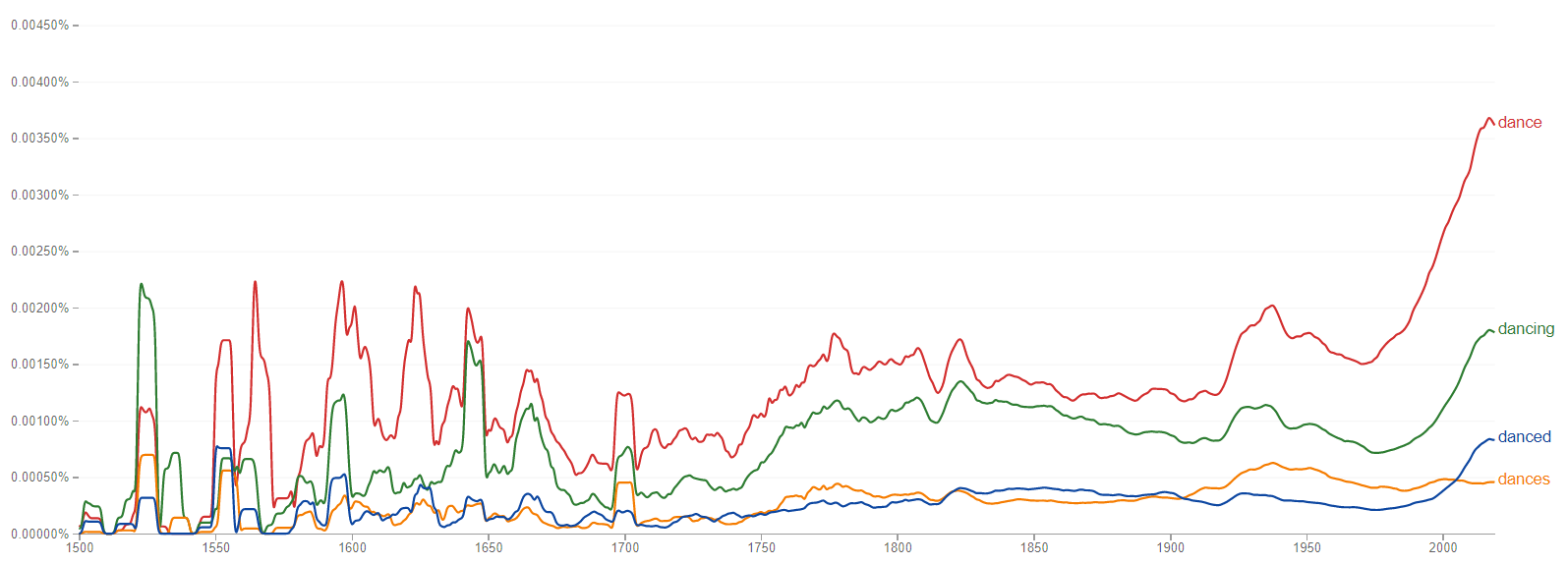
Example: space_INF
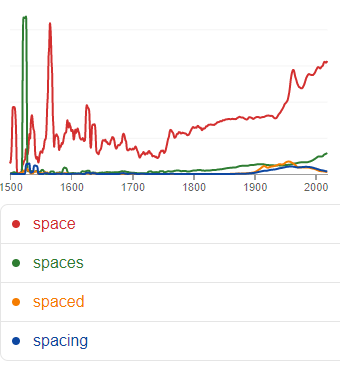
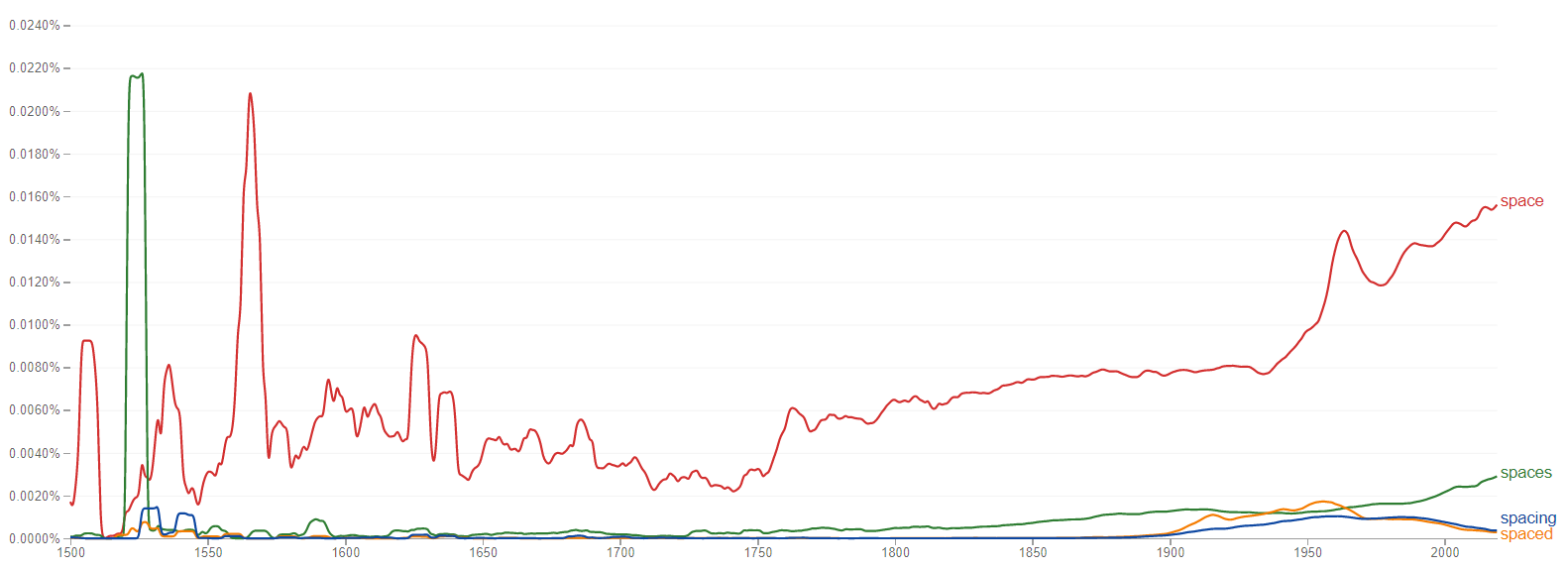
Example: love_INF
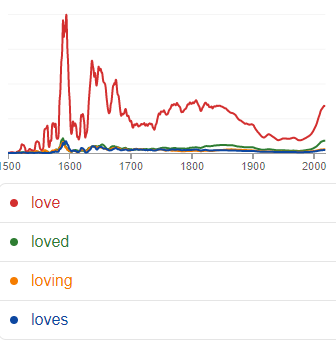
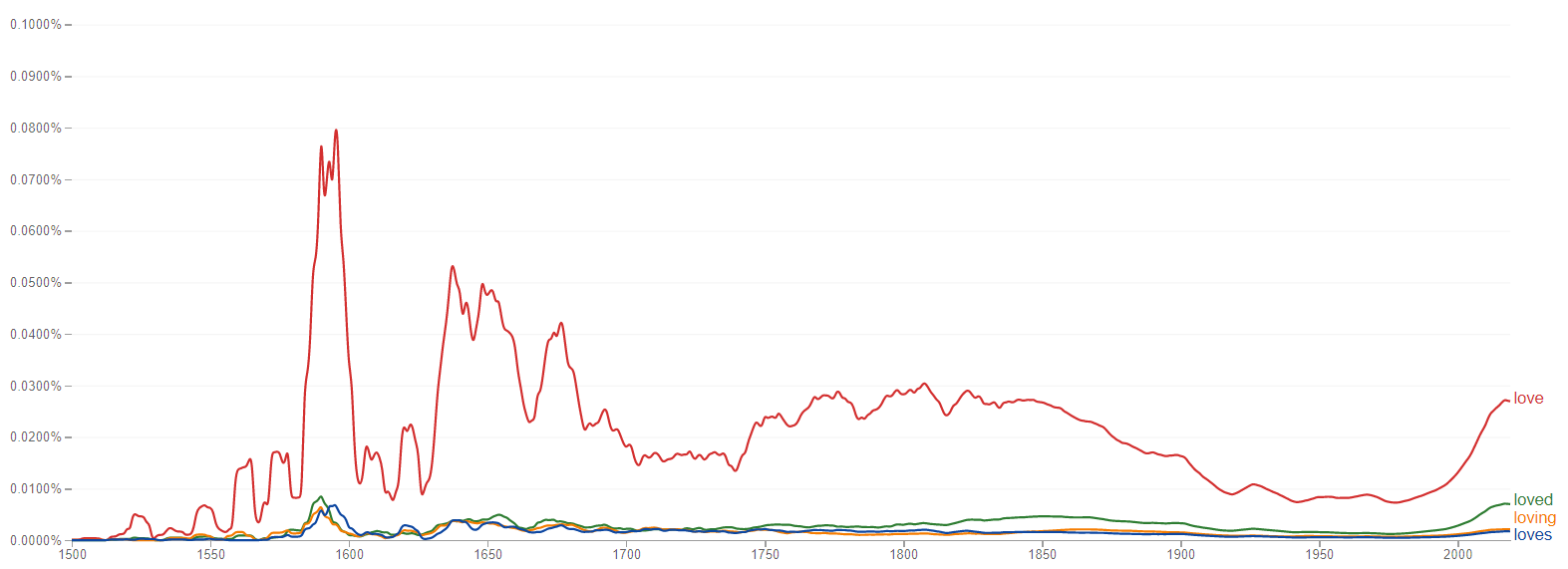
* - Top 10 Substitutions
Example: read * book
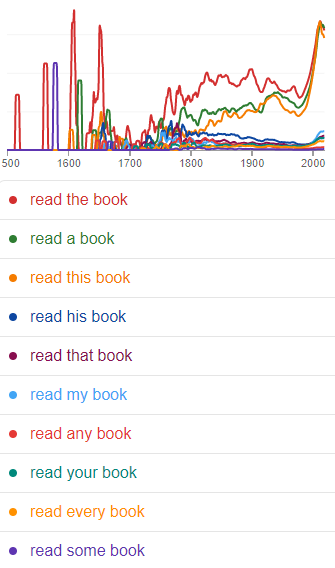

Example: University of *
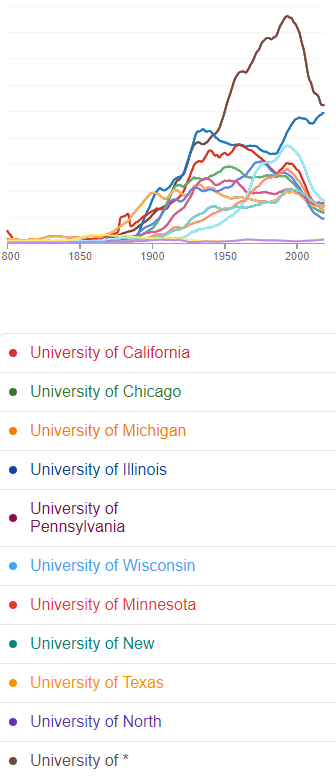
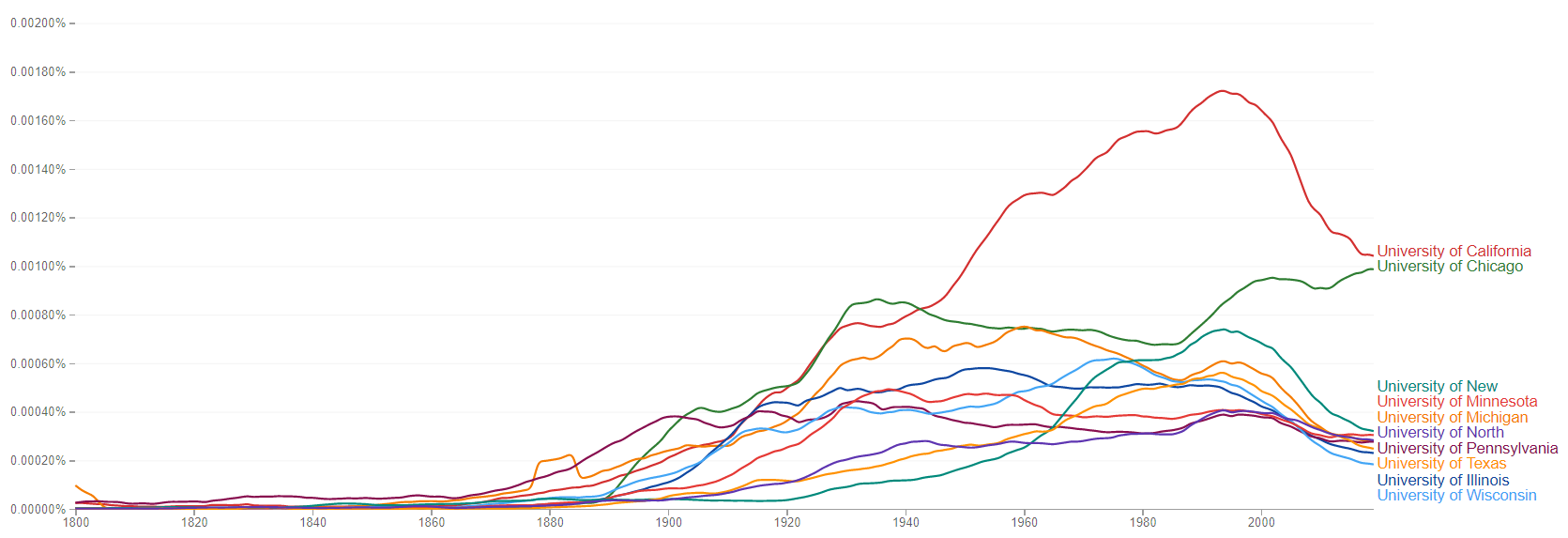
Example: * car
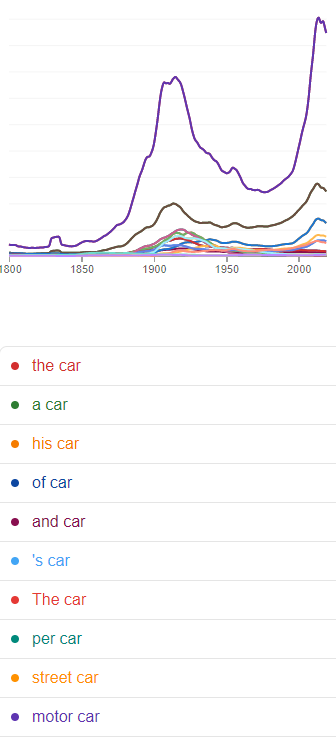
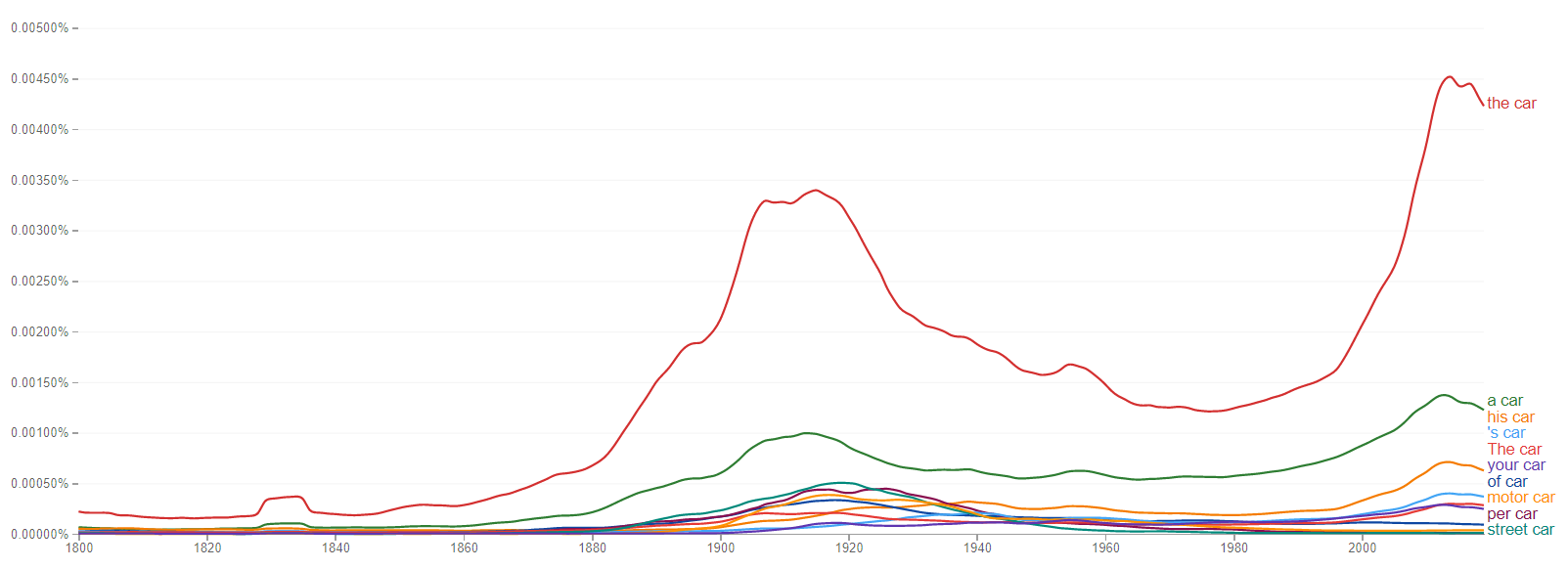
Example: my name is *
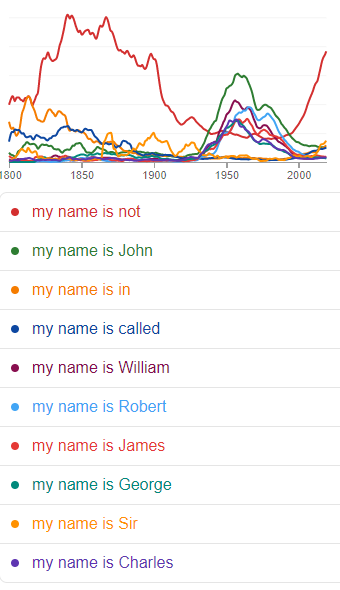

Example: I * going
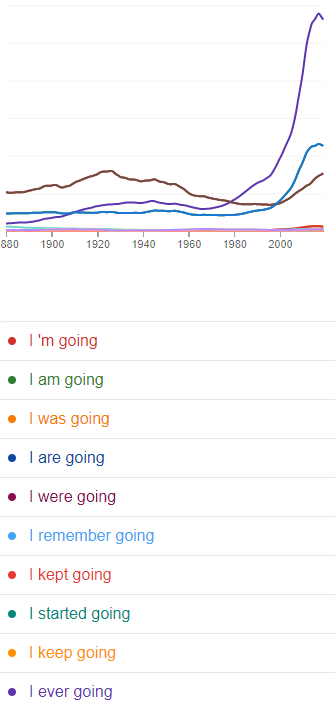

=> - Dependencies
Example: dessert=>tasty
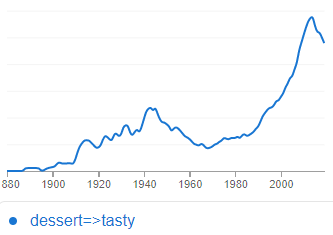
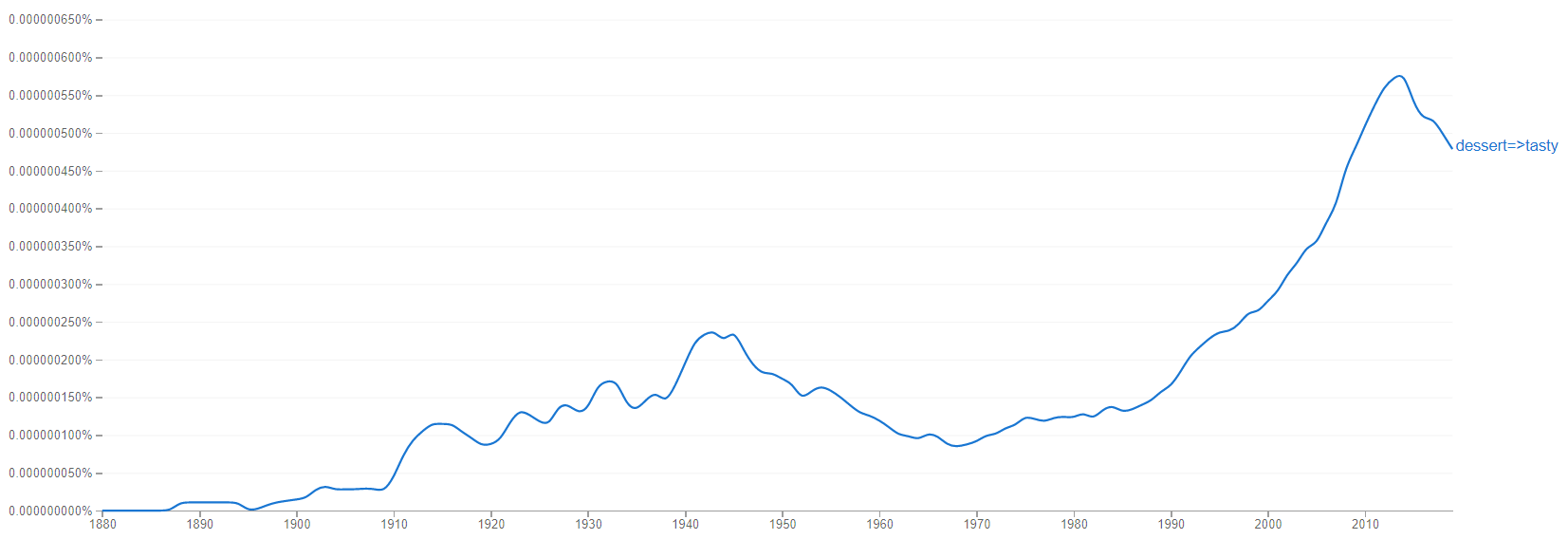
Example: cooking=>pig,cooking=>chicken
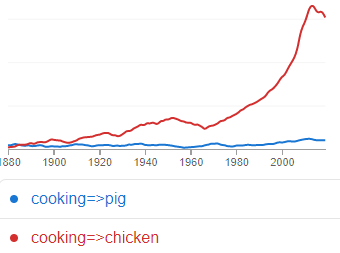

Example: smart=>phone,color=>phone
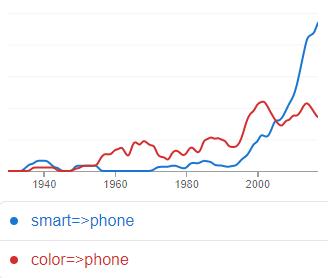

Part-of-speech Tags
Example: run_NOUN,run_VERB
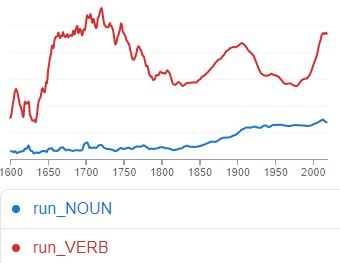

Example: read _DET_ book
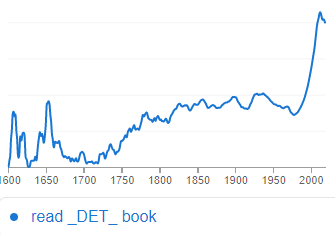

Example: _START_ President Truman
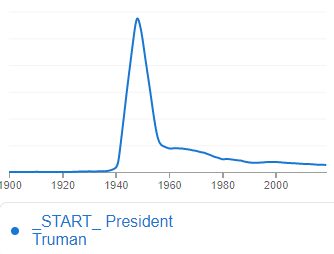

These tags can either stand alone (_PRON_) or can be appended to a word (she_PRON):
_ADJ_ - adjective
_ADV_ - adverb
_PRON_ - pronoun
_DET_ - determiner or article
_ADP_ - an adposition: either a preposition or a postposition
_NUM_ - numeral
_CONJ_ - conjunction
_PRT_ - particle
These tags must stand alone (e.g., _START_):
_ROOT_ - root of the parse tree
_START_ - start of a sentence
_END_ - end of a sentence
Combined queries
Example: read *_DET book
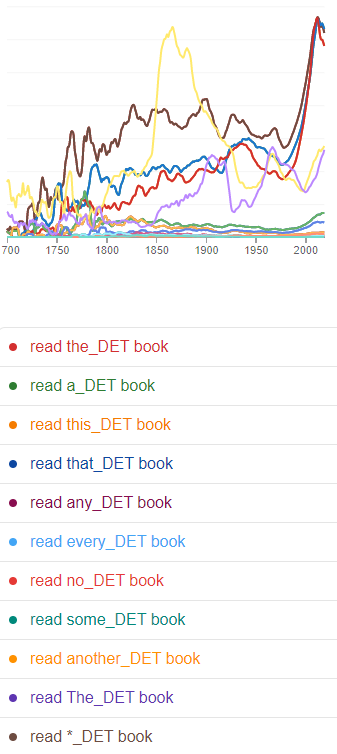

Example: book_INF _NOUN_
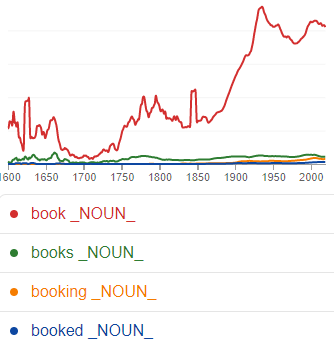

Example: cook_*
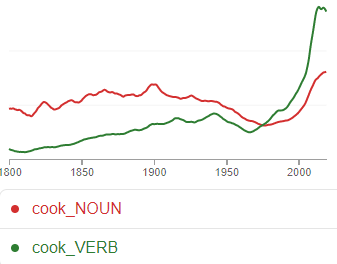

Example: cook_INF,cook_VERB_INF
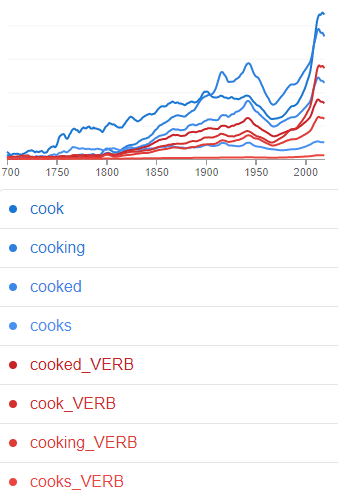

Example: _ROOT_=>will
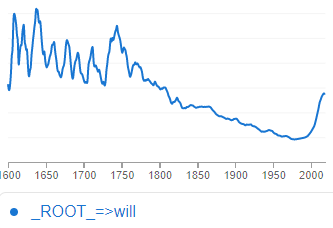

Example: drink=>*_NOUN
